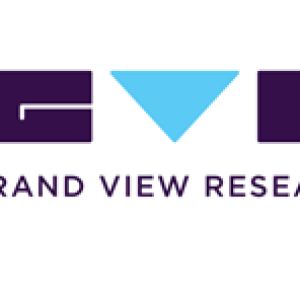Medical Terminology Software Market To Hit Value .34 Billion By 2030 |Grand View Research, Inc.Posted by Mrudula Anil Karmarkar on January 24th, 2023 The global medical terminology software market size is expected to reach USD 2.34 billion by 2030, registering a CAGR of 10.1% during the forecast period, according to a new report by Grand View Research, Inc. The increasing demand for standardization of patient data and compliance with standard vocabularies, such as SONOMED CT, RxNorm, ICD, CPT and HCPCS, and others are driving the adoption of clinical terminology solutions. The software uses a set of standard clinical terms to enable communication between different hospitals, departments, and specialties. This can be useful in situations where doctors need to collaborate in patient care or when patients need to be transferred between hospitals. Using medical terminology software can also help improve patient safety by reducing the risk of misunderstandings caused by incorrect terms. It also saves physicians time by assisting in the documentation and thereby reducing burnout. Hospitals, health systems, and payers are all seeking innovative while manageable ways for data integration. Moreover, the government is taking active steps by launching incentive programs for patient data integration. Computer-assisted coding and accurate clinical documentation by employing Artificial Intelligence (AI), such as Natural Language Processing (NLP) technology and medical machine learning, are accelerating this process. In addition, the growing demand for advanced healthcare data solutions is expected to create better business opportunities for clinical terminology solution providers. For instance, in September 2022, XpertDox, a Birmingham-based company specializing in automated AI-powered medical coding solutions, received funding of USD 1.5 million from TN3, LLC, a privately held company based in Arizona. The COVID-19 pandemic slowed down the industry growth. Revenue loss and financial crises, created by the pandemic, restrained hospitals to invest in the deployment of medical terminology software. Furthermore, the postponement of clinical trials resulted in a decrease in the utilization of clinical terminology software by CROs. The market growth is driven by factors, such as the increasing need to minimize clinical errors, increasing government initiatives to boost IT adoption among hospitals, and disparity within the clinical terminologies used by different healthcare organizations. Furthermore, the rising demand for interoperability between various hospital departments is propelling the industry's growth. Medical errors are one of the leading causes of death worldwide. To Request Sample Copy of this report, click the link: According to a John Hopkins study, in the U.S., more than 250,000 deaths are caused by clinical errors each year, making it the third leading cause of death after heart disease and cancer. Lack of standardized nomenclature is one of the major causes of medical errors. The growing focus on reducing clinical errors while maintaining standard patient information by the healthcare industry and hospitals are anticipated to fuel industry expansion. In recent years, the government has been taking proactive steps and measures to accelerate the implementation of Health Information Technologies (HITs) in healthcare settings. Medical Terminology Software Market Report Highlights
For instance, in 2022, ONC announced funding opportunities in HIT under the Leading Edge Acceleration Projects (LEAP). The funding opportunity aims to expand health IT standards and solutions to improve the exchange and research on Social Determinants Of Health data (SDOH) and to develop tools for using EHR data for research. Many of the EHR vendors partner with medical terminology software providers for content or to add the clinical terminology feature to their EHR. For instance, in January 2021, Wolters Kluwer N.V. announced the integration of Henry Schein MicroMD, an EHR and practice management solution with Health Language Clinical Interface Terminology (CIT). COVID-19 medical terminology market impact: 6.1% increase from 2020 to 2021
This will help in the quick mapping of clinical abbreviations, acronyms, and incomplete terms to standardized nomenclature. Thus, increasing the adoption of EHR. The growing number of new product launches, mergers, and acquisitions by industry participants is also promoting industry expansion. Many investors are focusing on entering the industry owing to the potential growth prospects and increasing traction. For instance, in April 2022, Thomas H.Lee Partners, L.P., a private equity firm announced the acquisition of Intelligent Medical Objects, Inc. The acquisition is anticipated to support the company’s product development and expand business relationships with hospitals and other care providers. List of Key Players in Medical Terminology Software Market
Like it? Share it!More by this author |


